By Steve Davis
Eight strategies for reducing risk of hospital-acquired infection
The Centers for Disease Control and Prevention (CDC) has estimated that nearly 2 million patients each year acquire an infection that is linked to a hospital visit. Of those, about 90,000 result in death.
In October, the CDC released new guidelines, Management of Multidrug-Resistant Organisms in Healthcare Settings, that outline strategies to prevent the spread of drug-resistant infections in health care settings. The goal of the guidance is to prompt hospital leaders to make their infection control program—and adherence to it—a priority, says Jennifer Morcone, a CDC spokesperson.
The guidelines—combined with a growing emphasis on infection control throughout the industry—is certain to help environmental services staff gain respect from other departments, says Judene Bartley, CIC, vice president of Beverly Hills, Mich.-based Epidemiology Consulting Services Inc.
Contaminated surfaces in the hospital environment, she explains, increase the risk of transmitting infectious agents, which makes environmental services staff a very critical line of defense. Bartley is a member of the Communications Task Force for the Association for Professionals in Infection Control and Epidemiology.
The C. difficile threat
One of the biggest hospital infection risks is Clostridium difficile (C. difficile). While the bacterium has been an issue in health facilities for the past 25 years, it has recently become a top infection risk due to the emergence of an epidemic strain with increased virulence and increased resistance to fluorquinolone antibiotics. Compared to C. difficile strains previously identified, this strain produces 16 times more toxin A and 23 times more toxin B—the two primary virulence factors of this bacterium, according to Lynne Sehulster, a microbiologist in the CDC’s Division of Healthcare Quality Promotion Epidemiology & Laboratory Branch.
“In the late ’70s and early ’80s, [C. difficile] was the emerging pathogen of the day, the ‘new kid on the block,’ as it were,” Sehulster says. “All fingers now point to prior antibiotic use—primarily broad-spectrum antimicrobial agents—as the main risk factor associated with susceptibility for C. difficile-associated disease.”
Antibiotics can lower the natural intestinal populations of beneficial bacteria, which can create an environment where strains of C. difficile flourish. If C. difficile bacteria are ingested by a susceptible patient whose normal intestinal flora are disrupted, the resulting infection can produce symptoms that range in severity from watery diarrhea and cramping to pseudomembranous colitis and fulminant colitis, Sehulster says.
C. difficile typically is in a vegetative state when it’s in the intestine. The organism is shed from the body in feces. Once exposed to air, the bacterium converts to its spore form, which can be difficult to eradicate from the environment. The spores can remain on some surfaces for months if left undisturbed. Reducing the levels of spore contamination is important, and can conceivably be done with “frequent and rapid cleaning after episodes of fecal incontinence,” says Sehulster. However, while such a cleaning strategy can reduce the need for harsh chemicals, the approach may not be easily implemented.
Sehulster says there are five links in the infection chain. They are: (1) an active pathogen sufficiently virulent to cause infection; (2) a mode of transmission for the pathogen to reach the patient; (3) quantities large enough to cause infection; (4) a susceptible host; and (5) the correct portal of entry (e.g., an open cut, mouth or eyes). “Break any of these links, and infection will not take place,” Sehulster says.
Eight strategies
Here’s a look at eight strategies that Sehulster and other experts suggest for reducing the risk of hospital-acquired infection through environmental management:
1. Target high-touch areas Shrinking budgets make it difficult for ES departments to clean rooms more than once every 24 hours. If more frequent cleaning isn’t possible, staff should target high-touch areas (e.g., doorknobs, bed rails, light switches, call buttons, bed trays and bathrooms), says ASHES Technical Advisor Mark Regna. “As soil loads build up on surfaces, disinfectants have to work harder,” he explains. “The more often you clean, the less there is to clean, but you have to determine what is economically feasible.” Regna is director of health care service with Dallas-based Jani-King International Inc.
2. Stress technique over chemicals Instead of focusing on the type of disinfectant being used, ES directors should focus on the cleaning technique used by their staff. “If you simply have a cloth that’s sufficiently wet and has good contact with the surface, it can make a huge difference,” Bartley says.
3. Follow the directions It’s important for ES staff to understand that the Environmental Protection Agency (EPA) requires disinfectant manufacturers to specify the appropriate use conditions of their products and to determine the strengths at which the chemicals are most effective. Some disinfectants, for example, have maximum microbial inactivation properties at specific concentrations and might actually be less effective at higher concentrations.
The idea that a stronger concentration of a chemical makes it more effective is a common misconception, Sehulster says. “If the label requires the product to be diluted, there’s a reason,” she adds. “Deviations can throw off the ionic balance.”
During an outbreak of C difficile, Bartley suggests that surfaces be cleaned with a solution that is a 1:10 dilution of chlorine bleach (sodium hypochlorite). Higher concentrations of bleach won’t make the solution any more effective against the C. difficile spores, she adds. And while bleach can be an effective disinfectant, it isn’t very good for routine cleaning. In general, disinfectants don’t clean and cleaners don’t disinfect, Sehulster adds.
4. Consider the risks associated with sporicides Most surface disinfectants used in hospitals are relatively ineffective against C. difficile spores. While some products claim an ability to deactivate C. difficile, they generally are only effective against the vegetative form of the bacterium, says Sehulster, who adds that there are no disinfectants registered with EPA that can completely inactivate C. difficile spores. Some chemicals, such as gluteraldehyde, are effective sporicides but can’t be used on open surfaces because the vapors can be harmful. A solution that includes sodium hypochlorite (i.e., bleach) might have some sporicidal properties, but might not be potent enough to completely eliminate the spores, she adds.
5. Determine the effect chemicals have on materials, patients and staff ES directors need to select not only the most effective cleaning and disinfection products, they must also consider the amount of wear and tear those products will have on the areas being cleaned, Sehulster says. If a hospital administrator requests that the floors be regularly disinfected, the ES director should explain that the chemical could cause the floor covering to wear out more quickly, she says. Hypochlorite-based solutions also can be corrosive to certain metals.
6. Assemble multidisciplinary teams Sehulster recommends that hospitals form multidisciplinary teams to target infection risks. Clinical staff, for example, are trained to understand health issues, but might not know how dust from a construction project travels through a health care facility’s ventilation system or be familiar with the safety issues associated with cleaners and disinfectants.
That’s something the environmental services directors can explain. “The more confident they are in the knowledge base, the more their leadership skills will show through,” Sehulster says. ES directors should have some training in chemistry, infection control, industrial hygiene and materials science. Those who don’t have such training should consider continuing education courses to help broaden their expertise, she suggests.
7. Check each other’s work Environmental services departments should develop checklists that outline each step involved in cleaning a room. Those lists can then be used by staff to make sure that all of the steps were followed, Bartley suggests. “Then you increase the likelihood that there won’t be a gap [in cleaning] that might allow transmission of infectious agents.” Bartley admits, however, that such strategies can be difficult to implement because there are pressures on ES staff to turn rooms around quickly.
8. Emphasize hand washing among staff and visitors ES managers need to reinforce the importance of personal hygiene among their staff. “Microorganisms don’t travel from point A to point B by themselves. They tend to be moved by the air, by people touching surfaces or by people exposed to coughs and sneezes, Sehulster says. Clean hands can help to minimize microbial contamination on frequently touched surfaces. While alcohol-based hand cleaners are excellent for killing bacteria and viruses, they aren’t as effective as soap and water for killing C. difficile spores; however, use of alcohol-based hand cleaners and gloves can help to reduce the bacteria on the hands, Bartley adds.
And while hygiene among staff and patients is important, patient family members and other visitors pose an enormous infection threat, Regna says. Hospital staff should remind visitors of infection risks and urge them to wash their hands. Signs posted in patient rooms can be used to convey the link between hand washing and infection, he suggests.
“We tell doctors and nurses to wash their hands and to clean their stethoscopes before touching a patient,” Regna says, “but we need help from the patient to tell their visitors to wash their hands.”
Important role
The battle against hospital-acquired infections is a top priority at every facility, and ES managers are becoming increasingly recognized for their important role in this fight. The eight steps covered in this article will help them expand this role and improve patient health, too.
Steve Davis is a Washington, D.C.-based freelance writer and a frequent Health Facilities Management magazine contributor with extensive health care industry experience.
This article 1st appeared in the December 2006 issue of Health Facilities Management Magazine.











